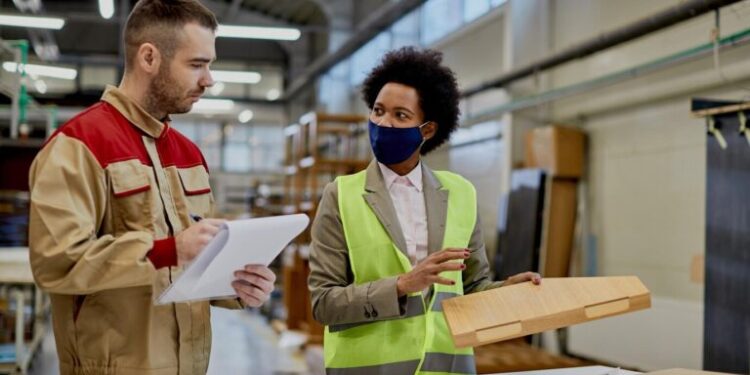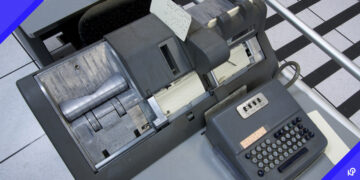In an ever-globalizing economy, the efficiency and security of international trade are paramount. Customs inspections, a critical component of border control, have long been synonymous with delays, inefficiencies, and complex processes. However, the advent of advanced border crossing X-ray technology has revolutionized how customs officials inspect goods, ultimately shaping the landscape of international trade. This article delves into how these innovative technologies are impacting customs inspections and international trade dynamics.
Efficiency in Customs Inspections
One of the most significant advantages of advanced border crossing X-ray technology is its ability to enhance the efficiency of customs inspections. Traditional inspection methods often involve manual searches, which can be time-consuming and resource-intensive. With the introduction of sophisticated X-ray machines, customs officials can quickly scan large volumes of cargo, identifying potential security threats without having to physically unpack shipments.
These machines utilize advanced imaging techniques that allow customs officers to visualize the contents of containers and vehicles in real time. This capability drastically reduces the time required for inspections, leading to faster processing of goods at border crossings. As a result, goods can move more swiftly from one country to another, improving supply chain efficiency and reducing delays that can negatively impact businesses and consumers.
Enhancing Security Measures
The threats posed by illicit smuggling, drug trafficking, and the transportation of counterfeit goods have prompted customs agencies worldwide to adopt more stringent security measures. Advanced border crossing X-ray technology plays a crucial role in this endeavor. The ability to detect anomalies within cargo without unpacking it greatly enhances the security of borders.
These X-ray machines can reveal hidden compartments and illegal substances that may otherwise go unnoticed in traditional inspections. By providing high-resolution images and advanced analytical tools, customs officials can better assess the risk associated with specific shipments. Consequently, this leads to a more targeted approach to inspections, allowing authorities to focus their resources on high-risk cargo rather than uniformly inspecting every single shipment.
Cost-Effectiveness for Governments and Businesses
Implementing advanced X-ray technology at border crossings not only streamlines inspection processes but also proves to be cost-effective in the long run. For governments, the reduced need for manpower and the minimization of delays can lead to significant savings. Fewer delays mean reduced congestion at ports and border crossings, which can lower operational costs for customs agencies.
For businesses, the benefits are equally substantial. Faster processing times result in quicker turnaround for shipments, which is essential for companies operating in today’s just-in-time supply chains. By minimizing the time goods spend at borders, businesses can optimize their inventory management and reduce associated costs, ultimately leading to increased competitiveness in the global marketplace.
Facilitating International Trade
As countries seek to enhance their trade relationships, the efficiency and security provided by advanced border crossing X-ray technology can facilitate smoother international trade agreements. Nations can rely on the enhanced capabilities of their customs agencies to ensure that goods are transported safely and efficiently across borders. This confidence can lead to stronger trade partnerships and more favorable trade terms.
Furthermore, improved customs inspections can also stimulate foreign direct investment (FDI). Investors are more likely to commit to markets where they feel their goods will not be subjected to excessive delays or risks. By adopting advanced customs technologies, countries can position themselves as attractive destinations for international business, leading to economic growth and job creation.
Impact on Regulatory Compliance
Regulatory compliance is a major concern for businesses involved in international trade. The adoption of advanced border crossing X-ray technology enables customs agencies to enforce compliance with international trade regulations more effectively. By facilitating more reliable and efficient inspections, customs officials can ensure that shipments adhere to legal requirements.
This technology also helps businesses by providing clear documentation of compliance with customs regulations. When shipments are scanned and documented with advanced imaging, it becomes easier to demonstrate compliance during audits or inspections. This transparency not only protects businesses but also fosters trust between customs authorities and the trading community.
Challenges and Considerations
While the benefits of advanced border crossing X-ray technology are substantial, there are challenges and considerations that must be addressed. The initial financial investment in such technology can be significant, posing a barrier to some countries or regions. Moreover, ongoing maintenance and updates to keep pace with technological advancements require continuous investment and training for customs personnel.
Another consideration is the balance between security and facilitation. While it is vital to enhance security measures, customs agencies must also ensure that their processes do not become overly burdensome for legitimate trade. Striking the right balance is essential to maintain the free flow of goods while ensuring that threats are effectively managed.
Future Prospects
The future of customs inspections appears increasingly reliant on technological advancements. As border crossing X-ray machines continue to evolve, incorporating artificial intelligence and machine learning capabilities, the efficiency and effectiveness of customs inspections are expected to improve further. These advancements will likely lead to even more streamlined processes, reduced costs, and enhanced security, ultimately transforming the landscape of international trade.
The integration of advanced border crossing X-ray technology signifies a pivotal shift in customs inspections, impacting international trade on multiple levels. By improving efficiency, enhancing security measures, and facilitating smoother trade relations, these technologies are playing an invaluable role in the global economy. As nations continue to navigate the complexities of international trade, the adoption of such innovative solutions will be essential in ensuring that borders remain secure while allowing for the seamless movement of goods across the globe.













